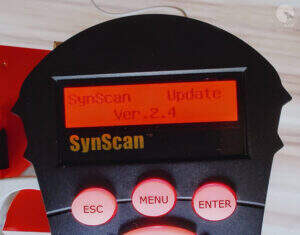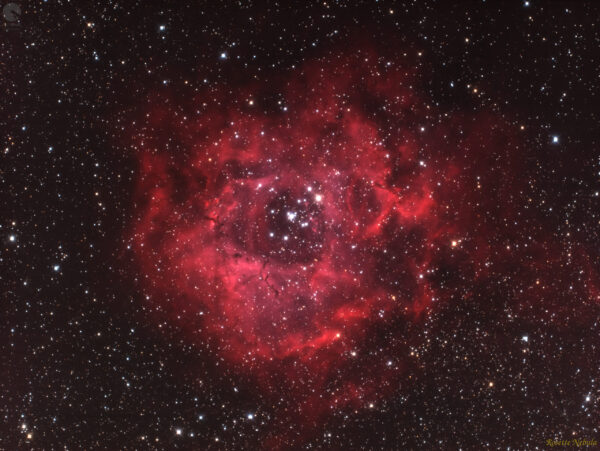It is a stretch of galaxies that forms part of the Virgo Cluster. When viewed from Earth, the galaxies lie along a smoothly curved line. Member galaxies include M84 (NGC 4374), M86 (NGC 4406), NGC 4477, NGC 4473, NGC 4461, NGC 4458, NGC 4438 and NGC 4435.
M86
(NGC 4406) is an elliptical or lenticular galaxy (bottom left zoom – bigger object) in the constellation Virgo.
NGC
4402 (bottom left zoom – smaller object) is a relatively near, edge-on spiral galaxy located around 50 million light-years
from Earth. It is in the constellation of Virgo within the Virgo Cluster of galaxies. NGC 4402 is roughly 55 thousand
light-years wide and is moving away from Earth at around 232 kilometers per second. It is falling into the Virgo galaxy cluster.
NGC
4438 (bottom right zoom) is the most curious interacting galaxy in the Virgo Cluster, due to the uncertainty surrounding the energy mechanism that heats the nuclear source; this energy mechanism may be a starburst region, or a black
hole-powered active galactic nucleus (AGN). Both hypotheses are currently under investigation by astronomers.
NGC
4388 (upper left zoom – bigger object) is an active spiral galaxy located in the Virgo Cluster. NGC 4388 is also considered to be one of the brightest galaxies in the Virgo Cluster due to its luminous nucleus.
Source:
https://en.wikipedia.org/wiki/Markarian%27s_Chain
https://en.wikipedia.org/wiki/Messier_86
https://en.wikipedia.org/wiki/NGC_4402
https://en.wikipedia.org/wiki/Eyes_Galaxies
https://en.wikipedia.org/wiki/NGC_4388
Photographs made on March 2019.
Stack: APP (6 best frames)
Processing: GIMP v2.10.14 + add-ons (Linux)
Lights: 6 x 118[s], ISO-1600
Flats: 1 ISO-1600; 30.3.2019
Bias: 20 ISO-1600; 02.8.2019










